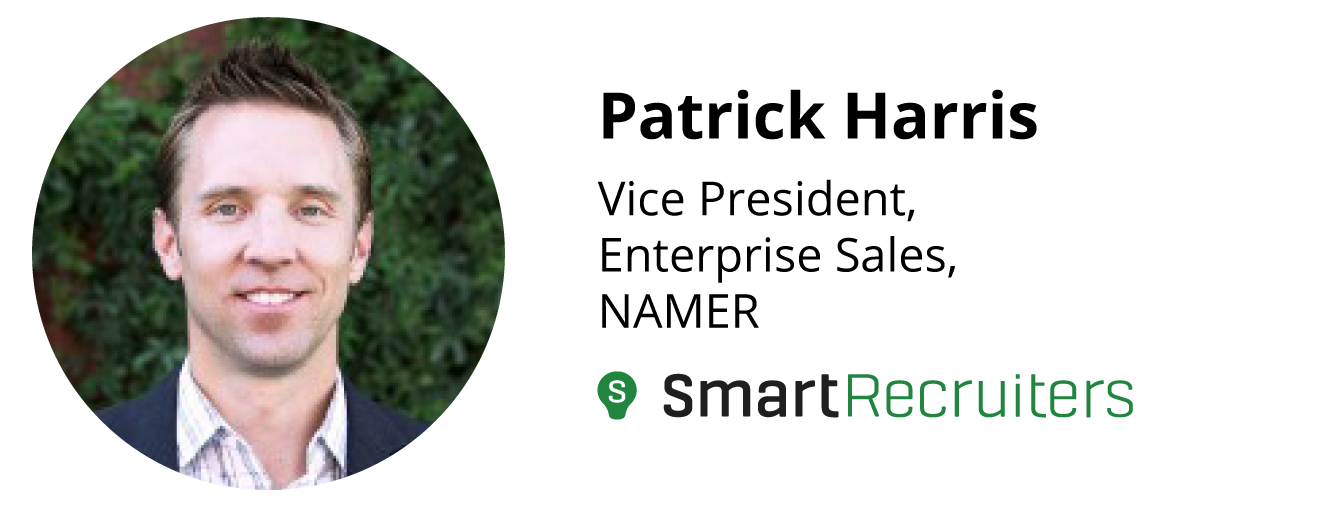The contagious global uncertainty of the last several years has a unique flavor in the United States: political polarization, a reckoning around race, rampant layoffs in tech, and bank failures. At the same time, unemployment is low and some industries are experiencing a talent shortage. Economic fears mean that many talent acquisition leaders are being asked to do more with less – and justify everything through metrics, which they may or may not have.
Against this backdrop, I wanted to get a fresh take on what’s going on in the recruitment tech landscape in the United States. It turns out that sales leaders have a strong line of sight into what’s not working; companies seek a new solution when things become untenable with the old one. One surprising finding of my conversations with SmartRecruiters’ two North American sales leaders, Armando Villa, Vice President, Commercial Enterprise Sales, and Patrick Harris, Vice President, Enterprise Sales, is that early-stage sales conversations can be like therapy sessions.
Armando, who happens to be the son of a therapist, said, “before getting into the tech evaluation, people need to talk about their challenges. What makes them happy, what makes them frustrated? Once we’ve built trust, we can find a common thread to work together.”

The crisis of trust
In these times of polarization, there’s no more important word than trust. According to the Edelman Trust Barometer, “business is the sole institution seen as competent and ethical; by contrast, Government is viewed as unethical and incompetent.”
- Business is a stunning 53 points ahead of Government on perception of competence and 29 points ahead on ethics.
When it comes to enterprise technology decisions, the search for trust takes many forms and comes with many risks. Companies may get sold a great story on a new solution and find the implementation or post-sales support lacking. That’s why buyers tend to rely on ratings or analyst reviews from TrustRadius and IDC, and look for customer references and case studies that prove that the experience on the inside is as good as the view from the outside.
Systems contribute to mistrust
TA leaders are looking for new solutions for good reason. “Companies run into limitations with their applicant tracking system,” said Patrick Harris. “Often it’s over-customized, or people in different places are using different systems. There’s no standardization and it’s hard to get good reporting.” That reporting is critical to enabling leaders to get that elusive seat at the table and justify the cost of their investments to the C-Suite. “When everyone is doing things differently, there’s no way to benchmark or find data that you could leverage to make better decisions,” Patrick continued.

The Hiring Success Business Assessment is one tool companies can use to get a take on where they sit on the continuum of talent acquisition maturity. “It comes down to people, process, and technology,” Armando explained. “Do they have the right people in place? Can the people do the jobs they’re being asked to do? Are their processes the most efficient for where they are today? And is the technology stack in front of them doing what it needs to do?” Too often, he sees companies with hiring processes that exist “because we’ve always done it that way,” without any current thinking behind them.
Applying technology to problems without adjusting the people and processes is a danger zone. And even when they get the people and processes right, it can be hard to manage the tech. As recruitment tech stacks have burgeoned, there’s a new desire to consolidate systems. “It’s not that they don’t need or get value out of their systems,” Patrick said. “It’s that it’s too expensive and time-consuming to connect all of them.”
Connected systems build trust
In today’s complex TA landscape, new solutions pop up all the time to solve old and new problems. “Companies truly believe they need multiple systems to get what they need, from talent attraction to post-onboarding,” Armando said. “There is no one size fits all. I’m a firm believer that there’s more than one way to get to the right answer.”
SmartRecruiters approaches this reality by offering a core recruitment system that comes with pre-configured integrations to a marketplace of solutions like sourcing, assessments, and background checks. “When you bring everything under one roof,” Patrick said, “you have a single source of truth.” Reporting that covers the whole recruiting funnel allows companies to diagnose roadblocks and adjust budgets and processes when needed. “When everyone’s working in the same system, you’re looking through the same lens,” Patrick said. “Nothing gets lost in translation. You can make better decisions.”
A baseline of data facilitates the transparency that builds trust and creates a foundation for experimentation. In today’s fast-changing market, moving from reactivity to proactivity is a key component to achieving hiring success. “SmartRecruiters provides you the opportunity to pivot and change and adapt more quickly to take advantage of whatever’s happening in the market,” Patrick said. “A flexible system allows you to get in front of trends.”
The business opportunity to lead with trust
As we navigate through future challenges, the need for greater trust and transparency isn’t going to go away. “Business must lead [in trust] and continue to do so,” say the experts at the Edelman Trust Barometer. How does a business lead in trust? By offering candidates a streamlined process, by fostering transparency among their teams, analyzing accurate data, and building relationships with partners they can trust.
It turns out that the talent acquisition “therapy session” Armando mentioned helps break down the barriers needed for strong business partnerships—on both sides. “Trust is best built through vulnerability and honesty,” said Armando. “It’s a two-way street. I encourage companies that are evaluating vendors to ask us tough questions. Everyone needs to sleep at night knowing they made the best decision for their company.”
Patrick and Armando are just two of the hiring experts quoted in our latest eBook, Global Hiring Trends 2023: How Talent Acquisition Can Adapt and Thrive in 2023 and Beyond. Inside, you’ll find a detailed framework for understanding how trust operates among candidates, hiring teams, and vendors in talent acquisition. Plus, you’ll receive five checklists to help you make better technology decisions.







